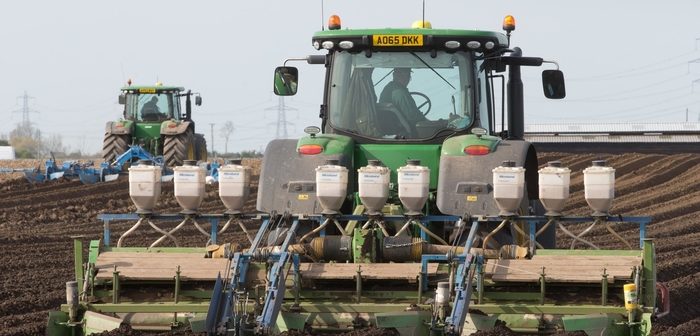Ensuring sufficient concentration of nematicide active remains in the target soil control zone surrounding roots is crucial to offer more effective control against the now dominant species of Potato Cyst Nematode (PCN), Globodera pallida.
Rob Farrow, Syngenta area manager and potato specialist for Shropshire and the north-west, highlighted results of new research that has shown the relative solubility of Nemathorin sees more of the active retained higher in the profile, compared to oxamyl that moved down faster in a laboratory solubility study.
“Both actives readily moved out from the point of application, but the initial stage studies have importantly shown that a higher concentration of Nemathorin active, fosthiazate, is retained in the upper zone.
“The implication is that, if the active moves through the soil profile too quickly, the concentration of active left could be insufficient to paralyse juvenile nematodes and prevent crop damage, as well as leaving more nematodes to multiply at the end of the season,” warned Mr Farrow.
In the trial, 76% of the applied fosthiazate was recovered from the representative upper soil zone, compared to 55% of oxamyl. By contrast, twice as much oxamyl had moved into the representative lower soil zone, as a proportion of the original application, compared to the Nemathorin (fosthiazate).
“Maintaining a higher concentration of active, through accurate application and granule placement in the target planting zone, will ensure better control of PCN, particularly as the season progresses,” advocated Mr Farrow.
The challenge with G. pallida species is especially serious, as the cysts and eggs tend to hatch over a prolonged period, compared to the other primary PCN pest species, G rostchiensis. “Pallida is now the dominant PCN species, shown to be present in over 90% of populations,” reported Mr Farrow. “Its cysts typically survive longer in the soil – which can limit the effects of rotational breaks – and growers’ options for Pallida tolerant or resistant varieties are more limited.”
Demonstrating the results at The British Potato Event, BP 2017, Mr Farrow emphasised that growers must pay attention to application and incorporation, as well as detailed soil testing to identify the extent of PCN populations and the specific species threat they face.
The Jealott’s Hill research has reinforced that Nemathorin should not be used with crops destined for early lifting and that growers must abide with the label stipulation of 119-day minimum interval from application to green-top lifting or burn-down.
Further trials are now planned to simulate soil movement of Nemathorin in different soil types and under specific rainfall patterns or irrigation schedules of commercial potato fields. “We know that Nemathorin is particularly effective for PCN control,” said Mr Farrow.
“The more information that we can provide to growers and agronomists, the better they will be able to utilise its strengths as part of their Integrated Pest Management programmes.”




